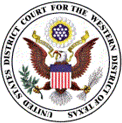Eyewitness identification can be a significant factor in criminal cases in Michigan and throughout the United States. However, because it relies on human memory and recognition, it can be a deeply flawed form of evidence. In fact, eyewitness mistakes have been connected to a number of high-profile wrongful convictions. These convictions were proven to be incorrect after DNA testing and technologies improved, revealing that the people convicted of serious crimes, like rape or murder, could not have been responsible. Many people across the country have had old convictions overturned after DNA tests have exonerated them.
There are a number of reforms that can help increase the accuracy of eyewitness’s testimonies in criminal cases. Witnesses to a crime are often asked to identify the perpetrator from a photo collection or live lineup. However, when people are given a set of photos, they often choose the person who most resembles the individual responsible rather than the actual guilty party. When a photo lineup is given prior to a live lineup, it can encourage the witness to identify the same person again even when his or her original identification was uncertain.
Cross-racial identification can also be a concern. People of all races tend to think that individuals of other races look similar to one another and may be more likely to confuse one person for another. In addition, when police already know which person or image in the lineup is a suspect, they can unconsciously indicate the most likely person, influencing the eyewitness’s choices.
Eyewitness testimony can be a major part of many criminal trials despite its problems and unreliability. When people are facing criminal charges, they can work with a criminal defense lawyer to present a strong defense in the courtroom and strive to avoid a wrongful conviction. An attorney can challenge inaccurate and dubious evidence from the police and prosecution.












